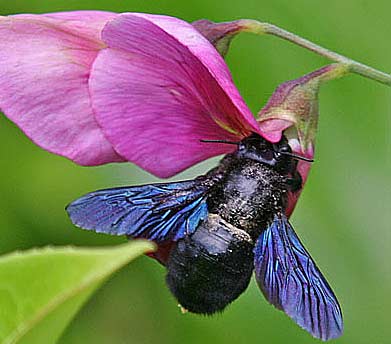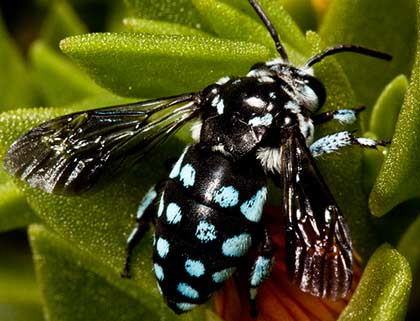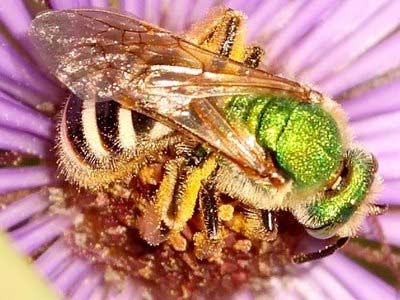Bees

Violet Carpenter Bee – Source: Jeff Clarke
Most bees are really quite friendly, good-natured creatures, in contrast to their close relative, the wasp. Most species of bee will very rarely sting unless they are, or feel that they are, being threatened in some way. There are some species of bee which do not even have stings. Unlike wasps, most stinging bees have barbed stings which are impossible for them to pull free from the flesh of whatever they are stinging. As they try to pull it free, the sting breaks away from their own bodies and they die shortly afterwords. Many people believe that this is what happens to all bees, but this is only the case for certain species of bee. For example the honey bee will die after using its sting, but the bumble bee will not. The bumblebee is the friendliest bee anyway and is least likely of all bees to sting anyone.

African Cuckoo Bee – Source: Colin Ewington
There are thought to be over twenty thousand different species of bee. It is a diverse group of insects. Some are green, some are blue, some are fuzzy, some are big, some are tiny, and most buzz around, minding their beezness. Some bee species are highly social and live in colonies with several thousand other bees, but most species are non-social and prefer to live alone. There is even one species of bee which does not live on the pollen and nectar of flowers. The vulture bee eats only carrion, scavenging for the meat of dead animals. While bumble bees are giants in the bee world, the tiniest of all is the halictid bee. This minute little bee is as small as a pinhead. It is also called the sweat bee as it is attracted to perspiration.

Green Sweat Bee – Source: Ecobirder
The temperature is very important to bees and they can be vulnerable to climate and environmental changes. Many bees burrow in the earth to make their homes.
Apiculture is another name for beekeeping. It comes from the Latin “Apidae” which is a large family group of bees including the honey bee.
